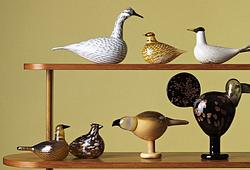PAGOD, åtta delar, porslin. Qingdynastin, Qianlong/Jiaqing 1750-1800.
Bestående av åtta hexagonala delar, ståendes på en bas som är dekorerad med landskapsvyer, de övre sektionerna blir gradvis mindre och har tre välvda stängda dörrar respektive tre öppna valv. Hörnen av de välvda taken är dekorerade med karpar. Höjd 92 cm.
Skador, lagningar, delar saknas.
Proveniens
The Ekman family, Gubbero (demolished in the 1920's).
Utställningar
Compare similar pagodas in the collection of the Victoria & Albert Museum, London and the Peabody Essex Museum, Boston.
Litteratur
N. Pearce in 'A Chinese Export Porcelain Pagoda in the Victoria and Albert Museum', Orientations, October 1987, Vol. 18, No. 11, p. 38.
William R. Sargent, Treasures of Chinese Export Ceramics from the Peabody Essex Museum , Yale University Press , 2012, pp. 152-4. Details from du Pont Daybooks, in the Winterthur Archives.
Övrig information
The famous Porcelain Pagoda of Nanjing, the Bao'en Temple Pagoda, built on the orders of the Ming dynasty Yongle Emperor to honour his parents in the early 15th century, was a source of wonder to Chinese who saw it, but also a source of amazed admiration to European travellers from the 17th century onwards. The pagoda was often listed in the 19th century as one of the Seven Wonders of the World, until it was finally destroyed during the Taiping Rebellion in 1854.
Porcelains of the huge size of the current pagoda models were difficult and very costly to make, and were extremely rare. However, they were greatly prized by European royalty. The British Prince of Wales (later King George IV, 1820-1830) purchased similar pagodas in 1804 and 1817 for his extravagant and exotic Royal Pavilion at Brighton.



































